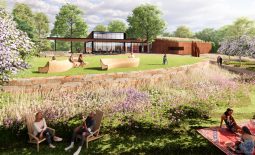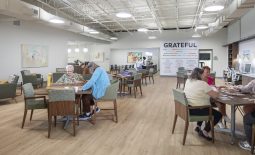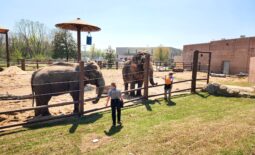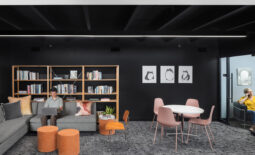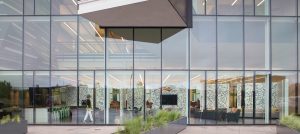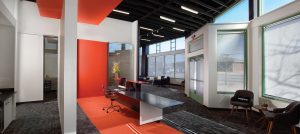Tulsa World recently sat down for “5 Questions” with our new partner team: Shane Aaron AIA; Nathan Koob AIA, LEED AP; Hank Spieker AIA; Whitney Stauffer and Jeff Thomas LEED AP, RAS. Here’s what they had to say:
1. What was the motivation behind these internal promotions?
Hank Spieker: This transition is nearly 20 years in the making — that’s how long I’ve worked here. Bob and Janet have always placed tremendous value in mentoring and training young talent. That is just one of the many reasons Jeff, Shane and I have spent our entire careers here — learning every day from their incredible design talent, technical knowledge, leadership and business expertise.Nathan and Whitney bring additional skill sets and unique perspectives developed through years of experience with other firms. Together, we are a balanced, well-rounded leadership team ready to continue the tradition of building community right here at home.
2. Why is having a younger leadership profile — the average age of the partner team is 39 — so important?
Nathan Koob: Attracting and retaining young talent has been a hot topic of conversation for Tulsa over the past several years. Studies show that a key factor in employee satisfaction and retention is the organization’s environment and culture.
Architecture and design play an important role in creating that positive environment. Our office is filled with young professionals committed to making Tulsa even better. We are energized by what is happening in downtown, River Parks, Brady Arts District, Rose District, East End and right here in our own Kendall Whittier neighborhood. So, it makes a lot of sense to have a group of talented, young, energetic professionals lead the firm. It’s a win-win.
3. What will be the new roles of founders Robert Schaefer and Janet Selser?
Jeff Thomas: This transition will allow them more time for mentorship. The knowledge base they have accumulated over their 40-plus-year careers in architecture is invaluable to the future of our firm. They will remain an integral part of Selser Schaefer Architects, ensuring that we continue to provide the same thoughtful design service our clients and community have come to know and expect.
4. How would you describe Selser Schaefer Architects’ approach to design?
Shane Aaron: At Selser Schaefer Architects, we believe architecture must be sensitive to its surroundings, complement the fabric of the community and result in functional solutions.Great design always starts with strong, personal relationships with our clients. We get to know their personalities, their goals, their visions, what makes them unique. It’s a very collaborative and personal process and invaluable in designing a project to meet their needs. Architecture is not only about creating buildings — that is part of it — but architecture is so much more and ultimately is about people and how the decisions we make can improve peoples’ environment, their lives and their communities.
5. What are some of the firm’s goals for the next 20 years?
Whitney Stauffer: Selser Schaefer Architects began with three people and has grown steadily over the past 24 years. We have always been passionate about the collaborative role we play in serving our clients across a wide array of project types. Whether it’s an elementary school, a clinic, a grocery store or a global headquarters, our projects are consistently recognized for design excellence because we not only meet our clients’ expectations, we exceed them. Tulsa’s economic outlook is robust, and our goal is to continue our steady growth by creating innovative, budget-conscious, exceptional environments that better our community — together.
Read full Tulsa World article.

